Capacity of an agile team is an important measure that should be used to inform the team how much workload it should undertake during its sprint planning meeting for an upcoming sprint. I
Get Started for FREE
Sign up with Facebook Sign up with X
I don't have a Facebook or a X account

 Your new post is loading... Your new post is loading...
 Your new post is loading... Your new post is loading...
Current selected tag: 'PSM2'. Clear
Agile teams that experience impediments must approach them with a team-based strategy that makes use of the Scrum Master as a way to remove blockers.
Mickael Ruau's insight:
As so often, collaboration proves to be ground from which to grow a successful Scrum team. Tackling the impediment as a team by running experiments and iterating on the solution improved in this case the team’s productivity as well as its standing with stakeholders and the senior management. (Except for one, but that is another story.)
Mickael Ruau's insight:
Agile organizations excel at both stability and dynamismSidebar Eighteen practices for organizational agility
In previous work, we have determined that, to be agile, an organization needs to be both dynamic and stable.7 Dynamic practices enable companies to respond nimbly and quickly to new challenges and opportunities, while stable practices cultivate reliability and efficiency by establishing a backbone of elements that don’t need to change frequently. The survey scored organizations across eighteen practices (see sidebar, “Eighteen practices for organizational agility.”), which our research suggests are all critical for achieving organizational agility. According to the results, less than one-quarter of performance units are agile. The remaining performance units lack either dynamism, stability, or both (Exhibit 2).
To help provide current and aspiring Agile professionals with additional information and guides for Scrum, we have compiled a list of member-written articles from a wide variety of experts. We have articles that cover a wide range of topics to help you learn everything you need to know.
Mickael Ruau's insight:
Team Structure Team Relations Processing Capability
Figure 1. Highlights in forming an efficient team The strategy I normally use when building high-performance Scrum teams is in line with a model developed by the American psychologist Bruce Tuckman in the 1960s (described in the article, “Developmental Sequence in Small Groups”). Tuckman defines four stages that teams go through in terms of shared experiences (forming, storming, norming and performing). Awareness of these phases helps the manager / coach determine what action is appropriate, depending on the theme and the needs the team has at a particular stage. A brief description of the various stages of development and leader interventions in those stages is specified in Figure 2 (source: [Storch & Søholm 2005]). Stage Stage Characteristics Leader Interventions Forming When a new team is formed, they answer questions, such as
The team establishes a common understanding, roles and procedures through self assessment and agreements. The community will be established and each individual will accommodate himself. Encourage development of the team-specific common understandings, roles, working, etc. PerformingThe team can primarily concentrate on getting the job done instead of procedures, cooperation and organising. The cooperation works and there are less talk about process and self assessment. Encourage work performance through a focus on excellence, potentials, new targets, etc.Figure 2. Tuckman’s Team Development Model including leader interventions There are two main points in the model:
Concepts in team developmentAttractor, a Danish institute of systemic management, communications and intervention, has developed a model with a set of concepts that can help leaders determine the right level of guiding versus coaching when working with teams. The model is described in [Juhl, Nørlem, Storch & Søholm 2007] and includes the terms direction, relations, scope and latitude, collectively known as the DNA of the team (see Figure 3). Figure 3. Concepts in team development The terms of this model correspond directly to the main aspects of Scrum, which I address in Figure 4. The concepts are important markers in relation to team development and in the daily work of management.
Development Focus Points Concepts Related to Scrum Direction It is essential that the team has clear direction as to its global and daily targets. Facilitators must align work with the team's vision, purpose and formulated values. The team values must be in line with the values of the organisation. In relation to Scrum, the team's direction is determined by the prioritised product backlog, which describes the desired end result for the project. The sprint backlog describes what is to be delivered in the current period. It is essential for the team's sense of responsibility towards its commitments that the Sprint backlog describes specific and achievable goals in relation to the team's working conditions and resources. Relations The concept of relations covers both internal team relations and also relationships that exist with other teams / stakeholders in the organization. The team’s communication and interaction are important parameters. The way team members interact, rather than individual personalities, define what the team can accomplish. Internal relations create action in relation to conflict resolution, synergy, process improvements and knowledge sharing. In addition to supporting this within the team, the leader must also work hard to shape relations with the rest of the organization. Within the team, relationships are supported by the daily scrum meeting with an open dialogue on work progress. A skilled ScrumMaster will ensure that help is offered to those who need it, that the team together decides which tasks are launched, and that there is knowledge-sharing and quality assurance in the form of pair-programming, design and code review. In the field of external relations, the interaction with the Product Owner the most important. The balance in the relationship, where the Product Owner has product knowledge but is not to define the solutions, is an important point of awareness for the ScrumMaster. Compared to the rest of the organization the ScrumMaster also has responsibility for removing obstacles to the team's momentum. Scope Scope and latitude cannot be considered independently of each other. The scope must be visible so that the team can determine whether they play inside or outside the lane. The scope for the team's work is put into practice by external stakeholders as customers / users, or senior management, and comes in the form of economy, resources, product requirements, priorities, timetables and organisational structures. The Product Owner is the customer / user representative and has described the product requirements in the Product backlog (preferably as User Stories). Backlog items are prioritized in relation to each other and the individual items are described and defined so that the team can see what’s in scope and what’s out of scope. If there is doubt, decisions will be made through a dialogue with the Product Owner. The time is defined by the length of the Sprint. Latitude The latitude includes the team's responsibilities and decision making. In other words it is the co-management of the team. Through the latitude, the team's own ambitions, objectives, improvements, ideas and autonomy can develop. Whether a team suffers from cut backs or not, there is always a margin for maneuver. A skilled team coach is able to help the team to clarify and make use of the right maneuvers in relation to the agreements. One of the main points in Scrum is that when the team, at the end of Sprint Planning, commits to deliver, it also has the right to all decision-making in relation to planning its work and making decisions about solutions. As long as the project's economy, the length of the sprint, the agreed specifications and the quality is not degraded, the team has the full right of decision-making.
Quand on parle d'agilité, on parle de dynamique de groupe. Cette dynamique est vraie pour de petits groupes, des groupes de taille moyenne et de grands groupes. En tant que coach organisation, Tuckman reste depuis 49 ans la référence. FORMING - STORMING - NORMING - PERFORMING... est connu de tous, non?
Mickael Ruau's insight:
StormingC’est la crise! Ce n’est rien de dramatique mais plutôt une opportunité pour s’améliorer. Certaines missions de coaching ont été interrompue à ce stade car les clients pensaient que l’agilité empêcherait cet effet. Bien au contraire. En tant que coach agile, j’aspire à atteindre rapidement ce stade car je sais qu’ensuite l’équipe est constituée, les individualités exprimées, un objectif commun trouvé et l’amélioration continue pourra commencer. NormingC’est l’objectif commun, un accord dur basé sur une expérience commune (celle qui a mené au Storming). La norme n’est jamais définitive et elle évolue sans cesse. En Agile, les rétrospectives permettent de définir ces normes, de les tester pendant une itération et de les améliorer sans cesse.
Six Thinking Hats, a book by Edward de Bono, describes an approach to thinking and problem solving that Agile teams can use as a tool.
Scrum is the most applied method for Agile software development. Depending on the source, 70-90% of all Agile teams worldwide say they use Scrum. The primary reason for the success is in the people using Scrum to help them manage and create software products, better.
What is Leadership? Embedding the capacity for greatness in the people and practices of an organization, and decoupling it from the personality of the leader -- David Marquet What is Agile Leadership? A combination of responsibilities and attributes unique to leaders that are building communities of thought and action. As a coach, your efforts to…
Values
Evidence-based management of software organizations systematically uses information about outcomes, organizational patterns and trends to maximize performance …
The challengeWhat managers see: the good, the bad, and the ugly. In mainstream sites and publications, real evidence can be found side-by-side with personal opinion, advertisements, case studies, interviews, pop non-fiction, etc. These are some of the better ones, yet - how to sort it out?
Mickael Ruau's insight:
EBMgt booksFor more, search our catalog for "evidence-based management"
I’m just logging the resources that I’m using to study for the PSM II. The first pass of the exam took 30 minutes (out of 90). A review of the initial 29 questions took another 30 minutes. It took one hour to complete the 30 questions on the exam. |
Evidence-based Management refers to an approach about how to make better decisions. We look at the benefits of Evidence-based Management from a management practitioner's point of view.
Who manages in an agile organization? And what exactly does an agile manager do?
Mickael Ruau's insight:
The idea of autonomous teams is not new; it’s been around for decades. For instance, in the quality movement that took hold in manufacturing and continuous improvement 50 years ago, quality circles and high-performance work systems often relied on an autonomous self-managed team with an informal team leader who was not technically a boss. More recently, companies such as WL Gore (in materials science) and Haier (the Chinese appliance manufacturer) have emphasized the empowerment of small teams, even if they don’t use the language we associate with agility—or focus those teams on software development, where agile has made some of its most prominent marks. Sidebar The agile revolution
Today’s agile organizations are building on these ideas (for more on the shift underway, see sidebar, “The agile revolution”). The squad leader is now a part of an agile matrix, where the value-creation, or tribe, leaders provide constant direction and prioritization around where the value is, and the capability, or chapter, leaders focus on ensuring deep functional expertise, common tools and competencies, and economies of scale and skill. If these leaders can become effective, nonintrusive managers, the agile company will enjoy the best of both worlds: the benefits of size and scale typically realized in large organizations, as well as the benefits of speed and nimbleness often associated with small entrepreneurial start-ups.
Small, independent teams are the lifeblood of the agile organization. Top executives can unleash agile teams by driving ambition, removing red tape, and helping managers adjust to new norms.
Mickael Ruau's insight:
Alfred Chandler, the renowned business historian, famously observed that structure follows strategy: companies set their strategies, then organize themselves in a way that lets them carry out their strategies to full effect. But pressure from fast-moving digital natives and digitally transformed incumbents means that traditional businesses no longer have time to rethink their strategies and reorganize themselves every few years. To promote enterprise agility, more companies are choosing to make small teams their basic organizational unit. Problems occur, however, when companies don’t give their small teams enough autonomy to work at the speed required by the digital economy. Executives can change this by giving the teams the resources they need, by eliminating red tape, and by encouraging managers to learn, adopt, and enact the more flexible governance methods of agile organizational approaches. Those who do will see their small teams become more independent, and more capable of producing innovations and performance gains that keep their businesses ahead of the competition.
I was teaching a Certified ScrumMaster course when a question came up, as one often does, that needed an answer built around the concept of swarming.…
The Daily Scrum should be used to create transparency in the team. The Daily Scrum is meant to be short and is not a problem-solving meeting.
Mickael Ruau's insight:
From the Scrum Guide:
In other words, don’t have those discussions during the Daily Scrum! The Daily Scrum is essential to creating transparency and implementing the Scrum value of Openness. The three questions of the Daily Scrum are effectively:
Each member of the team takes a turn and answers those three questions. This doesn’t have to be completely stilted, but it should be Focused (another value of Scrum) and efficient so that the need for other meetings is minimized. Accomplishing this takes some practice. The ScrumMaster helps the team to keep the timebox
OpenSpace Agility is a bold new way to work through problems, but it can be tricky. Expert Jennifer Lent explains.
Mickael Ruau's insight:
I asked her for examples of Agile problem solving her teams achieved with this approach, and she gave me two.
The first was a meaningful shift that removed an impediment and helped the team move faster. The team switched to relative estimates. Instead of estimating the time software development tasks take in hours, the team simply designates each task as small, medium or large. "Estimating is not a valuable use of time, so let's do it quickly and move on," Pontes, co-author with Daniel J. Mezick of The OpenSpace Agility Handbook, said. "We move faster now." That type of Agile problem solving grew out of an OpenSpace Agility session, where the participants grappled with the estimating process, asking whether that time could be better spent getting real work done. The second was a more sweeping change from another session, in which a team member stood up and spoke the truth. "'We don't have the right vision for the product,'" she recalled he told the group, which included business executives with a direct stake in the product's success. "It was really about calling out the elephant in the room," Pontes said. I love the vision question because it hones in on what every software team needs to know: Are we developing the right the thing? Do we have the right people in the room to inform our vision and our process?
This CQ Dossier addresses the most important statistical methods for professionals and managers that want to base their decision on evidence-based knowledge.
The field of software development is relatively young, but it has progressed very quickly. In just a few decades it has undergone maturing processes that have taken much longer in other fields. During the last decade Agile methodologies have gained wide spread acceptance, and are becoming mainstream. Transitioning to Agile is undertaken both by well established “traditional” software development organizations, as well as by more rudimentary “cowboy-style” development shops. In this post I examine the reasons why this transitioning is taking place, and what consequences come out of it.
From
plan
If you’re working on a complex project, whether it’s a mobile app, website redesign, or product, there’s really no better way to manage your team and your time than with Scrum. N
Mickael Ruau's insight:
According to Kamlesh Ravlani, a certified scrum master and coach at Agile for Growth, there are dozens of metrics used by Agile teams, including:
Le guide de l'Evidence Based Management est fourni gratuitement par Scrum.org, comme le guide Scrum et le guide Nexus.
Evidence-based management covers both qualitative and quantitative research. This CQ Dossier provides a brief introduction in both research traditions.
Welcome to the downloadable tools for Art of Coaching Teams. Here you will find worksheets, checklists, and other documents to augment and enhance the material available in the Art of Coaching Team book. |









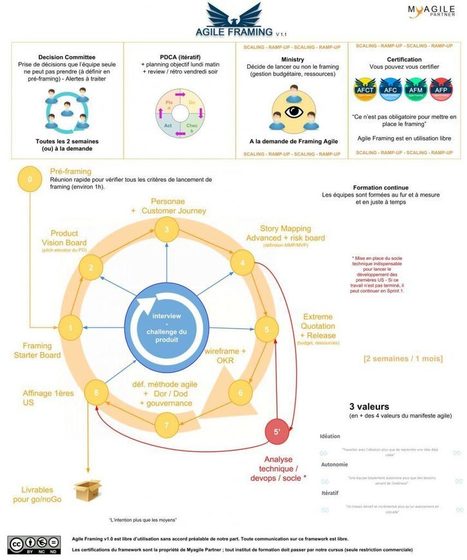
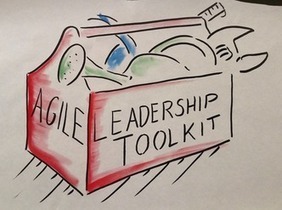





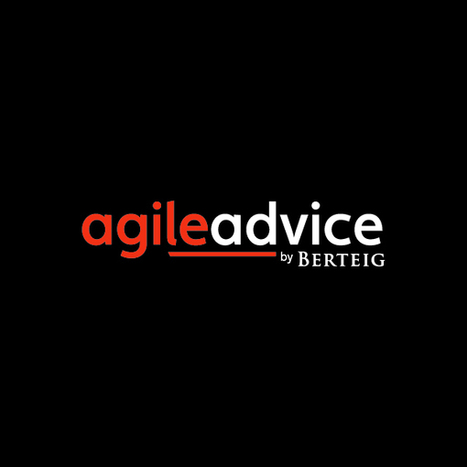
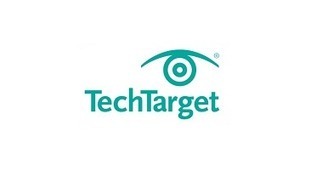
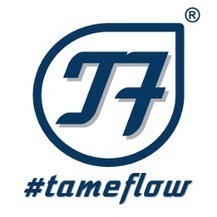

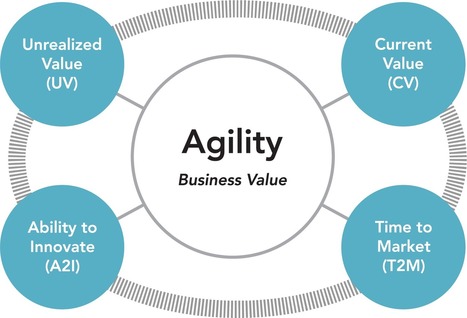





I will present three methods for capacity calculation:
I present Methods 1 and 2 in this first part of a two-part blog series. I will present Method 3 in the Part 2. At the end of the Part 2, I will offer recommendations about which method you may select for your use, based on your agile team’s specific situation.